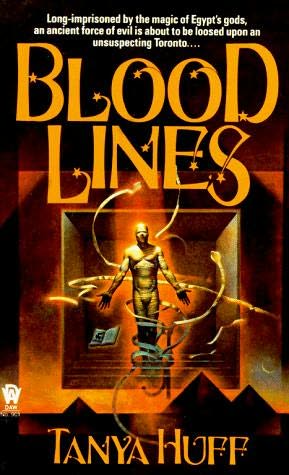The fourth book in the series.

Publication year: 1993, 2006 for the omnibus
Page count: 283 in the omnibus
Format: print
Publisher: Daw
Vicki has taken on a case that infuriates her: a man has faked his own death and escaped his wife and children to another life. His family was devastated by his death but when his wife realizes he might be alive, she’s determined to make him pay. Vicki is also determined to catch him and make him pay. On top of that, her personal life is starting to shatter; his boyfriends are pressuring her to choose between them. So, Vicki is in no mood to talk to her mother. However, after dodging her calls for a few days, she hear the awful news: her mother is dead.
As usual, Vicki bottles her feelings tight inside. She travels to Kingston by herself; she doesn’t even tell her boyfriends about her mother’s death. However, Henry and Celluci find out about it pretty quickly and follow her, each in his own car. They are determined to give Vicki any support she allows them to give. She’s not happy that they have come but she allows them to stay.
Which is a good thing. In the middle of the funeral, they find out that Vicki’s mother’s body is gone. Vicki will not rest, or grieve, until she has found the body.
Henry and Celluci are afraid that she will break down mentally if she continues to keep her emotions so bottled up. Vicki focuses on rage all the time so that she doesn’t have to think about the fact that her mother is dead and the she dodged her mothers’ last calls. Then she finds out that her mother had a heart condition and everyone at her work place, in the university, knew about it, but she didn’t. She battles rage, grief, and guilt.
I’ve enjoyed the classic villains in the series a lot. This book’s villains continue the trend: they’re a group of scientists at the Queen’s University’s Life Sciences department. Essentially, they’re trying to reanimate the dead. We get to know this at an early stage and like the previous books, Blood Pact isn’t a “who did it” but “how we’re going to stop them” mystery. Thankfully, the corpses aren’t described in gory detail. I still think that Blood Pact has more horror elements than the previous books.
The book ends with a bang that will change the rest of the series.











